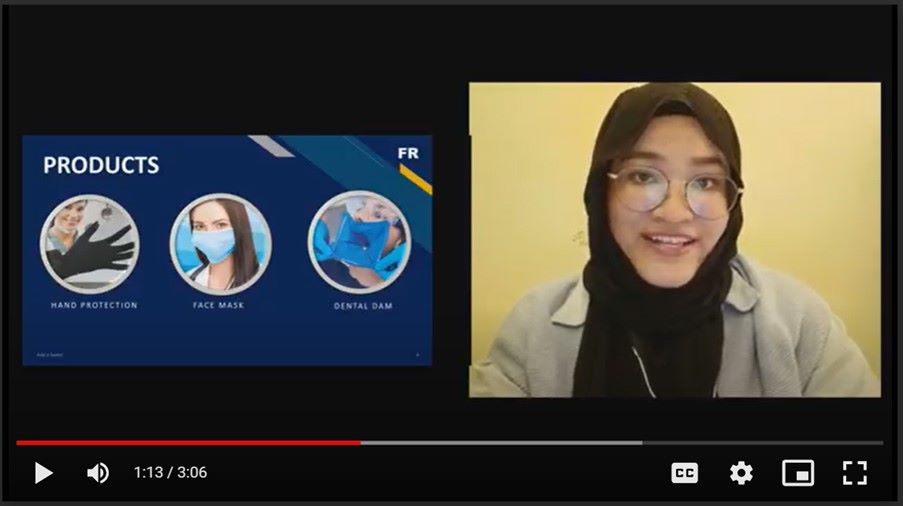Student Voice: Assessing Oral Presentations In Virtual and Physical Settings
The COVID-19 pandemic has changed traditional educational practices, forcing educational institutions worldwide to transition to online learning platforms rapidly. Instructors and students have no other option but to adapt to new pedagogical approaches that suit the instructional sessions and assessments conducted in virtual settings.
Oral assessments, particularly presentation sessions, are among the popular assessments at higher education institutions (HEIs). This could be due to the significance of oral communication competencies, particularly oral presentation skills, as part of the employability skills that are expected to be developed and enhanced by HEIs.
Many research studies have highlighted the challenges faced by our undergraduates in delivering oral presentations in physical academic settings. Recognising the importance of understanding student experiences, a recent study conducted at Universiti Malaysia Pahang al-Sultan Abdullah (UMPSA) aimed to investigate undergraduates’ perceptions of online and in-class presentations during the challenging period of remote learning.

Moving forward to online distance learning (ODL) and micro-credential modes of learning, all assessments will exclusively be conducted online, be it written or oral assessments. Considering that, challenges faced by the students should be taken seriously to ensure effective teaching and learning processes.
In oral presentation assessments, several general elements are evaluated, namely language skills, delivery skills, and professionalism aspects. Language skills refer to language components, such as clear and intelligible pronunciation, grammatically correct language use, appropriate use of lexical resources, coherence and cohesion, and fluency. At the same time, delivery competence elements consist of appropriate and effective use of eye contact with the audience, voice projection, the use of visual aids, gestures, and postures, as well as interactions with the audience. It is expected of students not to rely on prepared slides and notes heavily; however, slides and notes can act as referrals for main points.
The elaboration on the topic should be explained by the presenter. The incorporation of visual aids such as graphics and slides is also highly recommended in oral presentations to enhance the presenters’ confidence and hence effectively deliver their arguments. Professionalism is another significant aspect of oral presentation assessment. This element, which was emphasised by industry panels, covers the elements of time management as well as the attire of the presenters.
In reference to the studies conducted by the Centre for Modern Languages (CML) lecturers recently, it was found that the students encountered several hurdles, such as maintaining eye contact, projecting voice, using visual aids effectively, and employing gestures and postures in delivering virtual oral presentations effectively. Interacting with a virtual audience was also another challenge for some students.
Due to the above-mentioned challenges, many students prefer in-class presentations where it is more convenient for them to have direct engagement with their peers and instructors. By recognising the challenges faced by the students in online presentation sessions, educators can implement various techniques to create a more immersive virtual learning environment. For instance, instructors should advise students to look directly into the camera throughout the presentation so that the audience can strongly feel the engagement with the presenter. Maximum use of interactive features in teleconferencing platforms, such as chat functions, may also enhance audience interaction and feedback.
As online learning continues to be an integral part of education, students may experience different kinds of challenges in their process of learning, particularly in oral presentation assessments. While virtual platforms offer certain advantages, such as flexibility and accessibility, instructors should provide proper guidance to their students to fully utilise the interactive features. Optimising the teaching and learning experiences of both teachers and students in all modes is believed to enhance the HEI’s quality of education provided particularly in the context of preparing students for their professional practices.
To read more on the research conducted, feel free to go to: Tertiary Students’ Perceptions of Learning Oral Presentation Skills in In-Class and Online Learning Environment: A Case Study Mohd Radzuan | 3L: Language, Linguistics, Literature® (ukm.my).

Writer is a Senior Lecturer at Department of English Language, Centre for Modern Languages, Universiti Malaysia Pahang Al-Sultan Abdullah (UMPSA).
Email: nraha@umpsa.edu.my
- 141 views











